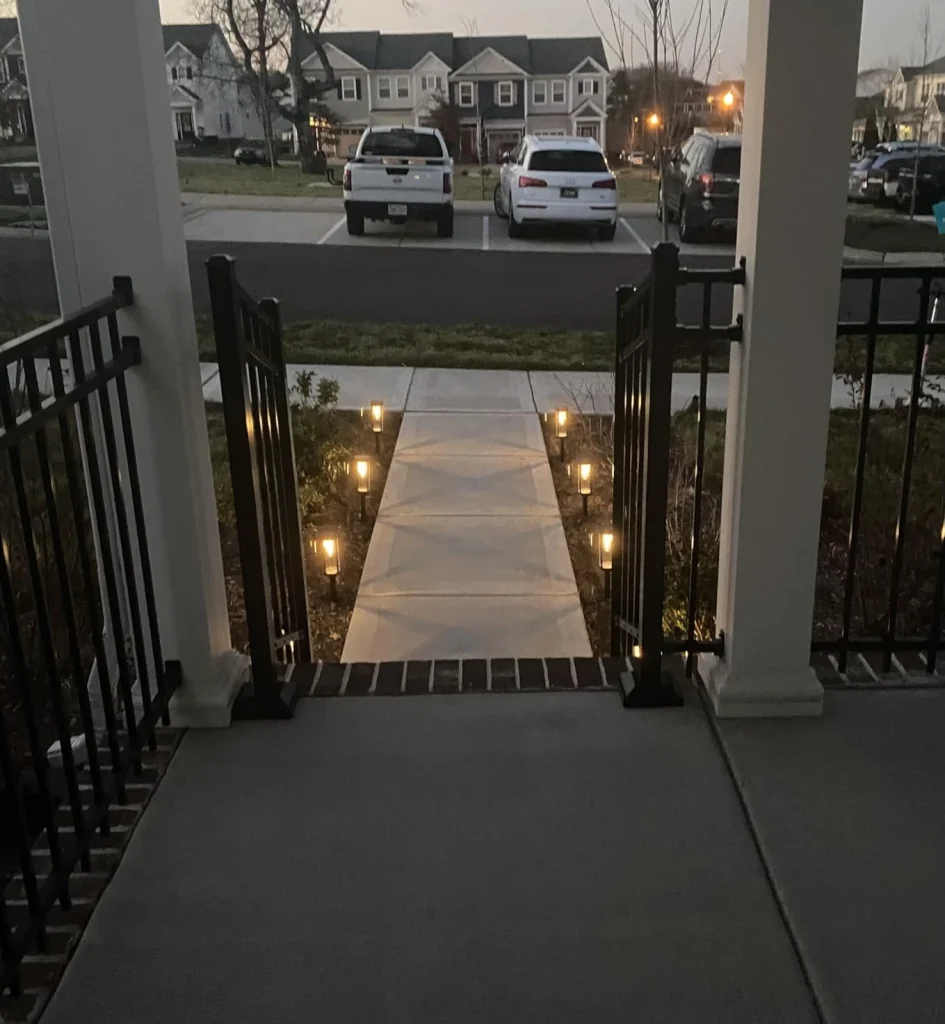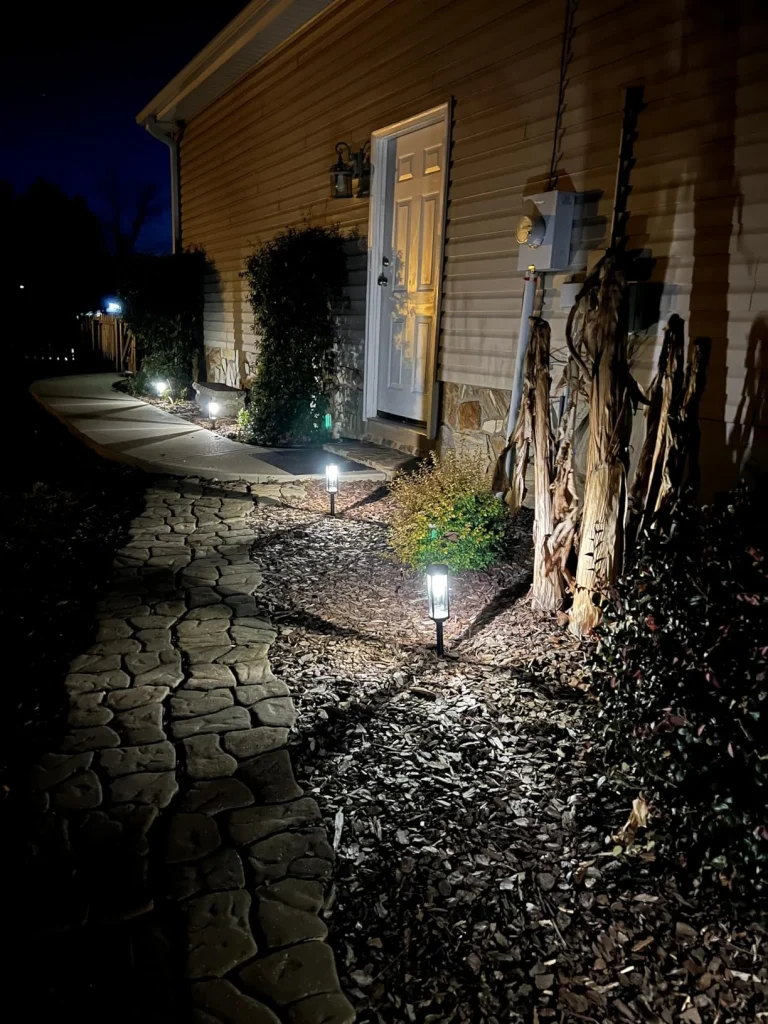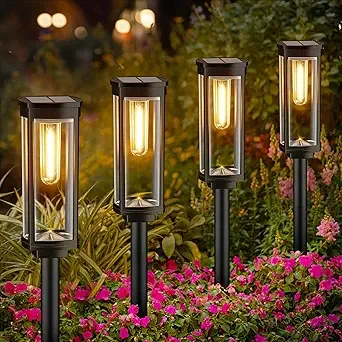Tripping over garden tools at dusk, fumbling for keys in the dark, or facing a sudden power outage during a backyard party—these outdoor lighting frustrations can be effortlessly resolved with a solar powered motion sensor light. These eco-friendly, wire-free lights provide reliable illumination exactly when and where you need it. However, many users find their lights either fail to detect motion consistently or run out of power too soon. This guide shares practical, tested tips to maximize the performance of solar powered motion sensor lights, covering setup, installation, maintenance, and versatile applications for various outdoor scenarios.

Optimize Core Features for a Superior Lighting Experience
Fine-Tuning Motion Sensitivity for Reliable Performance
Setting the motion sensitivity of a solar powered motion sensor light correctly is key to avoiding unnecessary triggers or missed detections. For lights near busy pathways, such as a driveway, adjust sensitivity to a medium level to prevent passing cars or animals from activating the light. In quieter areas like a backyard, a higher sensitivity setting ensures the light triggers when someone approaches from 10-15 feet away. To test, walk slowly at the edge of the desired detection range and confirm the light activates consistently without flickering.
Proper calibration enhances user experience and conserves battery life by reducing false triggers. A homeowner in a suburban neighborhood adjusted their driveway light to medium sensitivity, preventing frequent activations from street traffic while ensuring reliable lighting for evening arrivals.
Solar Panel Angle: Unlocking Maximum Charging Efficiency
The angle of the solar panel directly impacts the charging efficiency of a solar powered motion sensor light. In regions with lower sun angles, such as northern areas, tilt the panel at 45° to the ground to capture optimal sunlight between 10 a.m. and 2 p.m. In sunnier, southern regions, a 30° angle often suffices. Ensure the panel is free from obstructions like overhanging branches or roof eaves, as even partial shade can reduce charging by up to 40%. A gardener in a coastal area repositioned their light’s panel to avoid tree shade, extending runtime through cloudy evenings.
For installations under structures like pergolas, use adjustable mounts to fine-tune the angle seasonally. This ensures your light remains powered even during overcast days, providing consistent illumination for 3-5 nights on a single charge.
Matching Lighting Modes to Usage Needs
Solar powered motion sensor lights offer various modes to balance brightness and battery life. For high-traffic areas like front entrances, select a “high-brightness + 30-second off” mode, which delivers intense light for short bursts when motion is detected. For extended activities, such as evening gatherings on a deck, choose a “low-brightness constant + high-brightness motion” mode. This keeps a soft ambient glow and boosts to full brightness when someone moves, extending runtime by up to 60%. A homeowner in a lakeside community used this mode for a barbecue, maintaining a cozy atmosphere while ensuring bright light for guests moving around.
Check the light’s lumens (100-300 for ambiance, 500+ for security) and battery capacity (at least 2000mAh) to ensure compatibility with your chosen mode. Testing different settings helps find the perfect balance for your needs.
Strategic Installation for Seamless Coverage
Garden Pathways: Staggered Placement for Full Illumination
To light up garden paths effectively, install solar powered motion sensor lights every 6-10 feet in a staggered, alternating pattern on both sides of the path. Set the detection range to a 120° arc to cover the entire walkway without overlapping, which saves energy. Mount the lights at 3-4 feet high to avoid glare while illuminating the ground. A homeowner in a hilly region used this setup along a stone path, ensuring safe navigation during evening walks without wasting power.
Choose lights with adjustable detection angles to fine-tune coverage, especially for winding or uneven paths. This approach creates a seamless, energy-efficient lighting network.
Corners and Fences: Eliminating Blind Spots
Corners and fence lines are prone to lighting blind spots, but proper installation of solar powered motion sensor lights can address this. Tilt the sensor head downward by 10-15° to focus on ground-level movement, preventing missed detections. For metal fences, add a non-conductive spacer (like plastic or rubber) between the light and the surface to avoid interference with the sensor. Opt for IP65 or higher waterproof ratings to withstand heavy rain, as experienced by a homeowner in a rainy valley who relied on IP67-rated lights for consistent performance.

Test the sensor’s range after installation by walking through the area to ensure no gaps in coverage. This setup ensures reliable lighting for security and safety.
Deck and Patio: Multi-Light Synchronization
For larger spaces like decks or patios, synchronize multiple solar powered motion sensor lights for cohesive illumination. Install a primary light at the entrance to trigger first, with secondary lights set to “follower mode” to activate simultaneously. Keep lights within 25 feet of each other to ensure stable signal transmission. For evening events like outdoor dinners, set the lights to stay on for 3-5 minutes per trigger to avoid frequent shutoffs. A family in a suburban area used this setup for a patio party, creating a well-lit space that stayed bright as guests moved around.
Choose lights with remote control or app-based settings for easier synchronization and mode adjustments, enhancing convenience for dynamic outdoor activities.
Maintenance Tips for Long-Lasting Performance
Keep Solar Panels Clean for Optimal Charging
Dust, pollen, or water stains on the solar panel of a solar powered motion sensor light can reduce charging efficiency by up to 30%. Wipe the panel weekly with a dry or slightly damp cloth, especially after rain or in dusty environments. During fall, check for leaves or debris blocking the panel, as even small obstructions can cut runtime significantly. A homeowner in a wooded area maintained their lights’ performance by clearing debris biweekly, ensuring consistent charging through the season.
Schedule cleaning during early morning or late afternoon to avoid hot surfaces. Regular upkeep keeps your lights powered for years.
Winter Prep for Cold-Weather Reliability
Cold temperatures can reduce battery efficiency in solar powered motion sensor lights. Before winter, fully charge the light and store it indoors at room temperature for 24 hours to stabilize the battery. In regions with sub-zero temperatures, add a thin layer of insulating foam or tape around the battery compartment to retain heat, reducing runtime loss by up to 20%. A homeowner in a mountainous region used this trick to maintain their lights’ performance during snowy winters.
Replace batteries every 1-2 years with matching lithium-ion models to avoid compatibility issues. Dimming lights are a sign to check or replace the battery promptly.
Conclusion
Solar powered motion sensor lights are a game-changer for tackling outdoor lighting challenges, from garden safety to party ambiance. By fine-tuning motion sensitivity, optimizing solar panel angles, and selecting the right lighting modes, you can achieve efficient, reliable illumination tailored to your needs. Strategic installation in gardens, corners, or patios ensures no corner is left dark, while regular maintenance like panel cleaning and winter prep extends lifespan by years. With no wiring and automatic operation, these lights offer a cost-effective, eco-friendly solution that makes nighttime outdoor activities safer and more enjoyable. Get the settings and setup right, and you’ll wonder how you ever managed without them.

Comments